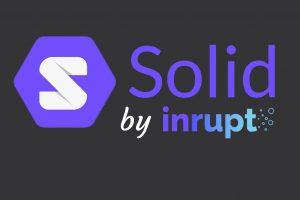“Leading data spaces: the example of T-Systems”- Conversing with Nina Popanton
“Leading data spaces: the example of T-Systems” – In a quest to gain a comprehensive understanding of data spaces, their main players, and their future trajectory, our team has been actively engaging with key actors in the dataspace ecosystem. As part of this endeavor, our COO Louis recently conducted a captivating interview with Nina Popanton.In this third post (see “What is a dataspace?” and “What is the Green Data Hub?”) we explore the role of T-Systems in the dataspace landscape and its approach to facilitating data spaces. Our guest provides insights into T-Systems’ involvement in the Catena-X dataspace ecosystem and their efforts to expand globally while maintaining European values.
Louis Cousin: What is the relation between T-Systems and data spaces?
Nina Popanton: T-Systems is one of the subsidiaries of Deutsche Telekom, a leading telecom operator in Germany. They offer a range of services and products, including the Data Intelligence Hub and its products. During my work in Austria, we collaborated with software providers and intermediaries to enable companies to participate in the data space ecosystem. The Data Intelligence Hub, which provides – among many other products – a connector based on the Eclipse Data Space (EDC) components, is a highly innovative solution that can be customized for both small and large companies. T-Systems play a crucial role in entering and governing within the dataspace landscape, making it easy to participate for companies of all sizes, from SMEs to middle-sized and large companies. Access to dataspaces is essential for all players in the value chain to be able to derive outcomes – like services and applications – from the activity in data ecosystems.
LC: So in practice, what does T-Systems do?
NP: T-Systems is one of the main technology providers for Catena-X, the first collaborative, open data ecosystem for the automotive industry. Additionally, T-Systems offers its wide ranging products on the platform of Catena’s operating company, Cofinity-X. However, our focus is not limited to Germany and Europe alone. The Data Intelligence Hub is collaborating with international companies to involve players from the U.S. or Chinese value chain in the dataspace ecosystem while upholding European values from initiatives such as Gaia-X and IDSA.
LC: So T-Systems is building its value proposition for dataspaces. Where are they in terms of already having a marketable product, or is it still in the development phase?
NP: The Data Intelligence Hub has fully advanced products (Connect, LivingLab, Digital.ID, Motion Data) that can be bought and used by companies. Clients can for example acquire the Data Intelligence Hub Connect product to enter the dataspace ecosystem or the LivingLab to build their business applications in a sandbox environment. With Digital.ID as one of the first implementations of the Gaia-X Digital Clearing House (GXDCH), T-Systems provides a one-stop shop for anyone seeking to be part of this ecosystem.
LC : Thank you, Nina. I wish you all the best in your future endeavors with T-Systems and the development of dataspaces.
NP : Thank you so much for having me!
Want to know more about T-Systems and data spaces? See the documentation about its Data Intelligence Hub, DIH Advisory accelerator packages, DIH Connect Products, DIH Digital ID features.



